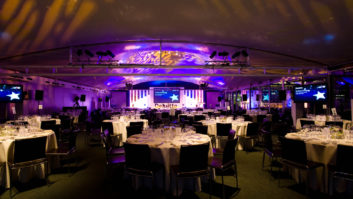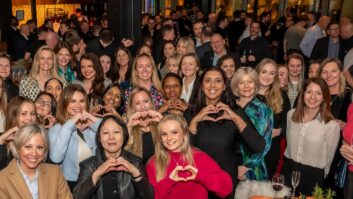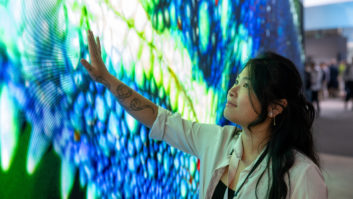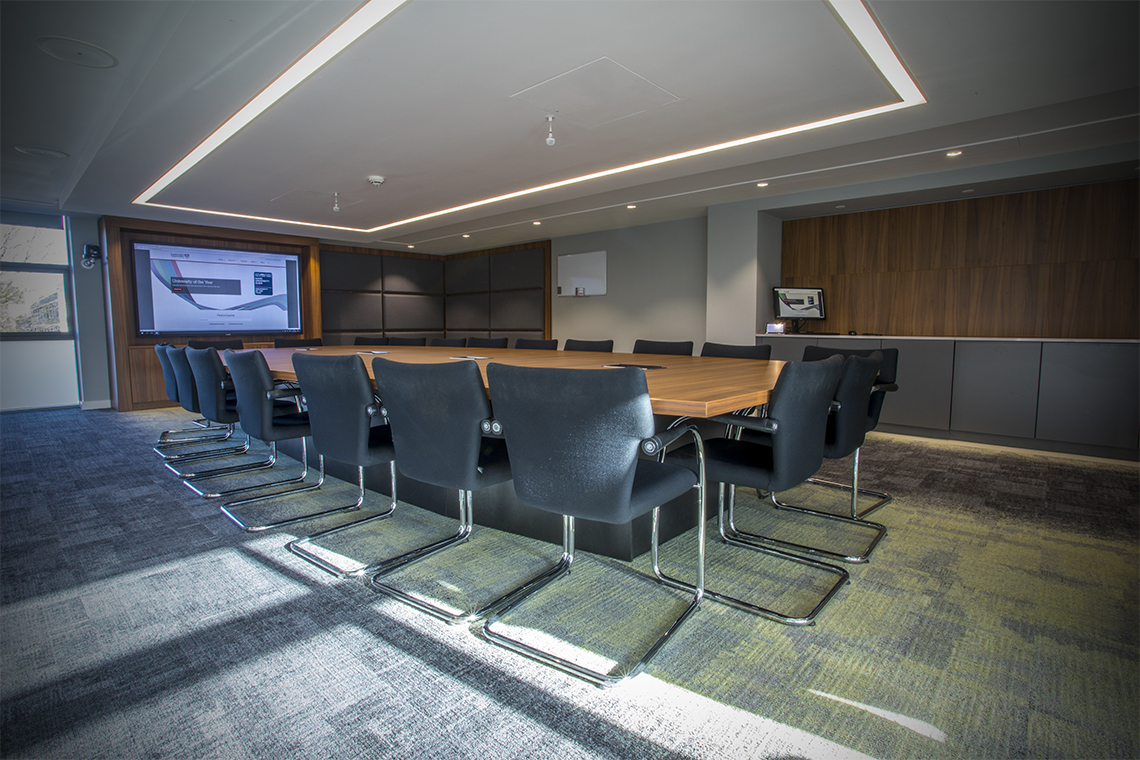
Hi David. Tell us about the AV equipment you use/manage on a regular basis
AMX for control, either NX2200’s or an integrated switcher /controller from the DVX range. Projectors are mainly Panasonic and we now specify a laser light source. We have Extron switchers in smaller rooms, and DSP is either Extron or BSS Blu. We are also responsible for Panopto for lecture capture.
What are the most common problems you encounter with AV equipment in the university’s teaching spaces and meeting rooms?
Our biggest problem is batteries in wireless microphones. We have installed charging cradles in our teaching spaces but even with a full charge traditional Radio microphones were only lasting 5-6 hours. Our rooms are heavily used throughout the day and into the evenings so we needed a solution with a longer battery life so we have recently been deploying the Sennheiser Speechline systems, and with the improved battery life of approximately 15 hours we have had far fewer problems than before.

What functionality is it crucial for a university to provide?
For the students – a clear image, good audio and lecture recording. We have been providing student collaboration areas for a long time, before they came under the umbrella of ‘Pods’, but the demand for displays that students can access and work with outside of traditional teaching spaces has sky rocketed in the past couple of years. For the staff – as we operate a central room booking policy they can be timetabled anywhere on campus so we need to ensure our Teaching Spaces are consistent not only on what equipment we provide but also a straightforward and consistent user interface for controlling the room.
In terms of AV, what are some of the cutting-edge capabilities universities should be looking to provide to keep evolving?
Collaboration has been a buzzword in education for a few years now, so anything from wireless BYOD devices like Kramer Via and Solstice Pods to Skype for Business/Teams and integration with devices like Surface Hubs. VR and Augmented reality suites are currently niche teaching requirements but I can see them becoming more widespread, and not just as a single user experience but a whole group of students experiencing one environment together. This also extends beyond the traditional campus boundaries, we have large numbers of distance students around the world and a campus in China so been able to give those students more of the ‘Lancaster experience’ via the use of technology.
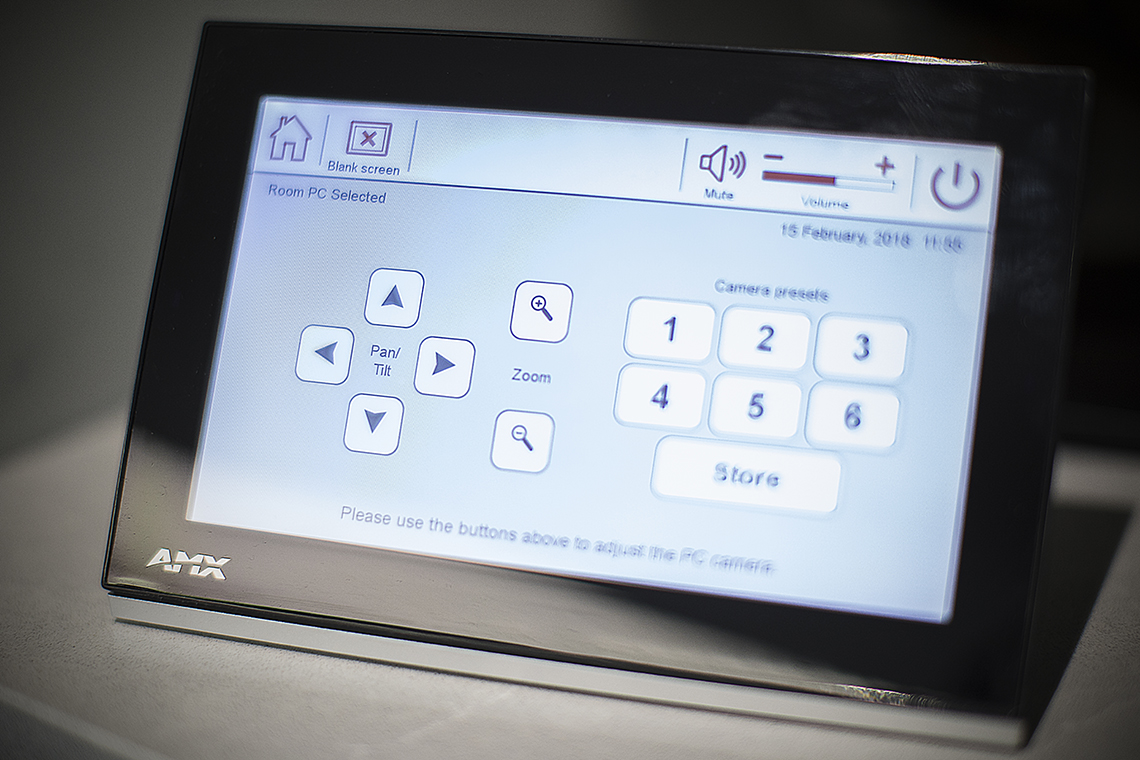
You recently updated the universities meeting space, what advantages does it provide?
A lot of our older meeting spaces would only provide a display screen and a VGA wired input for laptops. We are now providing Skype for Business capabilities in all meeting rooms as well as BYOD wireless connectivity. This means our staff can confidently book a meeting room knowing the equipment they need will already be present and don’t have to make additional requests. Also deploying common equipment across campus really helps with user familiarity and cuts down on training requests.
What factors do you have to consider to ensure a space is future proof?
We ensure there is spare capacity on any switchers so we can add additional devices without a major rewire. In addition, providing power and network capability beyond what the systems currently need so that connectivity issues do not limit future expansion.
Are you looking to enhance the university’s AV offering in other ways?
We are always looking at ways of improving our services. We recently took on a new member of staff to offer an enhanced lecture capture service with a camera operator to improve the quality of the video up from a ‘fly on the wall’ type of view. We are also due to upgrade our largest lecture theatre on campus and will be installing a Panasonic auto-trak camera system. Earlier this year we installed a ‘big screen’ in the central University square to show news, upcoming events and live sports. We recently had a ‘futures room’ showcasing newer technologies that lecturers may want to try out for their teaching sessions, so we set up equipment ranging from an Oculus Rift to a Smart Kapp writing surface.
How big of an AV in-house team do you currently have?
The ‘AV Team’ is myself plus three AV Engineers and one Digital Media Engineer. However all of our IT Engineers will cover AV callouts as well so that takes the number up by another 13. We also provide support for events and conferences, which keeps us busy outside of teaching terms as well.
Do you typically go via an integrator/distributor for AV installs or do some upgrades/projects get handled in-house?
All of our installs are carried out by an integrator from the NWUPC framework. In-house we can then concentrate on service and maintenance of the teaching spaces. We keep spare stock of most items installed on campus so if we do have a failure we are able to react quickly and swap out whatever the faulty device is whether it’s a faulty projector, switcher or controller. Using an installer from the Framework is really beneficial as we get to build long lasting relationships with trusted suppliers knowing that they have already been subjected to rigorous checks on not just their technical abilities but also their financial stability and Green credentials. This significantly cuts down on the amount of paperwork we are required to do especially for the larger tenders and allows us to concentre on the technical requirements of the installations.
Do you maintain direct relationships with manufacturers?
We maintain relationships with both the integrators and the manufacturers, there’s always something interesting to find out so we like to keep multiple lines of communication open!
What are some of the ways universities get it wrong when it comes to AV?
The same as anywhere I would assume, overly complicated systems that may offer a hi-tech solution but aren’t usable by someone without specific knowledge of the system design. AV Managers at UK Universities are able to tap into some great resources to help avoid common mistakes though, the SCHOMS and LTSMG groups are very active communities each with annual conferences sharing knowledge on best practice and case studies so this is a great way to learn what does and doesn’t work.
Are there any systems/solutions you have tried previously and had particular issues with?
The main problems we have had is when a product comes to market too soon and then you have a spate of firmware upgrades before the product is really ready to be used in a real world environment. Being an early adopter can be an advantage but can also be risky.



